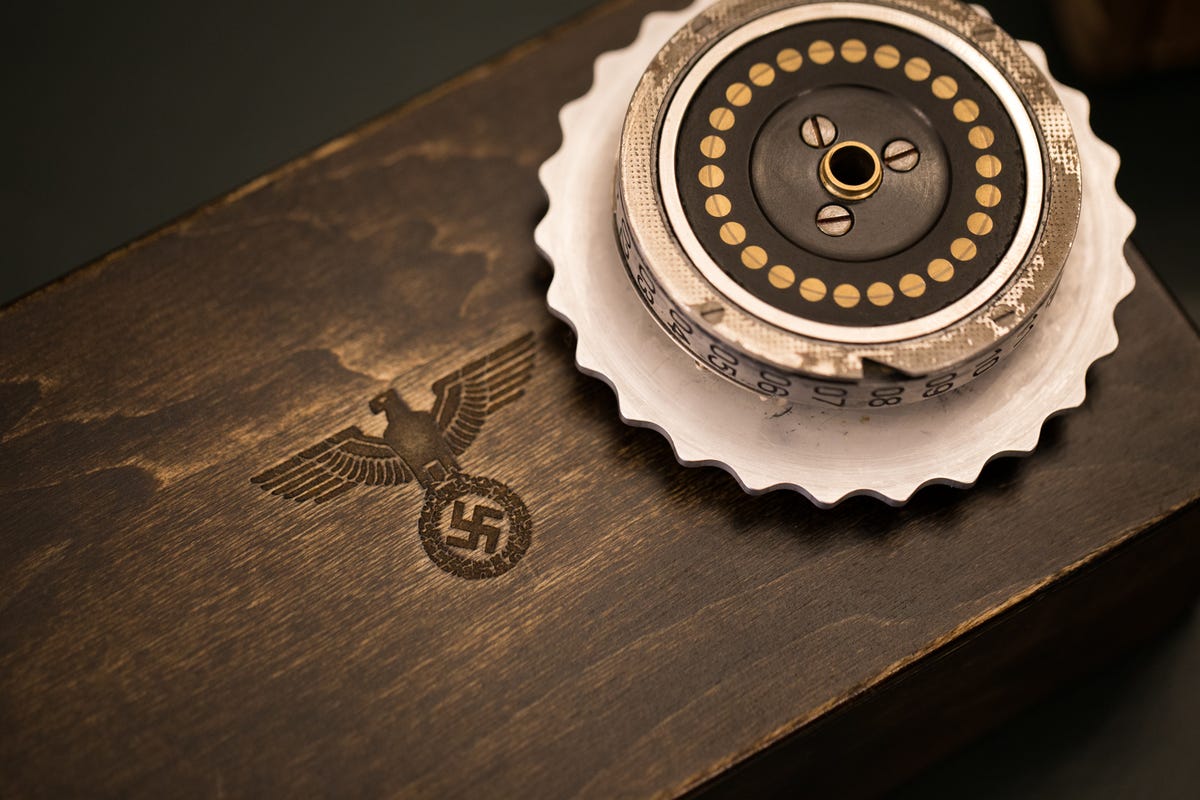Look inside Bletchley Park and get up close with an original Enigma machine
Our behind-the-scenes snaps show you how the fiendish Nazi Enigma machine encoded its messages, and the unassuming offices where the code was cracked.

CNET's 360-degree tour of Bletchley Park, now live on YouTube, takes you inside Britain's wartime codebreaking headquarters. Be sure to check it out, then click through our photos from behind the scenes at Bletchley Park, where we got up close and personal with an original Enigma machine.
Dominating the view of Bletchley Park is the mansion. Bletchley, in Buckinghamshire, was ideally situated as a codebreaking site since it was accessible from London as well as university towns Oxford and Cambridge, from which many codebreakers were recruited.
This is the office of Alastair Denniston. Denniston was involved in codebreaking throughout World War I, and was instrumental in establishing Bletchley Park as Britain's codebreaking nerve centre.
This bust of prime minister Winston Churchill looks out over the main hall in the mansion.
Away from the mansion's luxurious decor, codebreakers worked in cramped prefabricated huts, at desks like this one.
Rooms at Bletchley Park are decked out in period style to give visitors an idea of what daily life there would have been like.
Cryptographers at Bletchley managed to crack German communications without the aid of computers -- though their work would push computer science forward.
This is the office of Alan Turing, in Bletchley Park's Hut 8.
Alan Turing is perhaps history's best-known code breaker. This note left at the typewriter on his desk adds a little colour to the visitors' experience.
Codebreakers needed a good grasp of German, as well as the phrases that the German military would be using.
Posters like this were designed to help the war effort.
Much of the Bletchley codebreakers' time was consumed by this -- a German military Enigma machine. Enemy forces used these machines to encode their communications, and the encryption was devilishly hard to crack.
Enigma had one fatal design flaw, however. A letter could never be encoded as itself. So if you had an "a", you knew that letter wasn't really "a". Bletchley codebreakers also relied on "cribs", which were essentially best guesses at what a message could be about, and "pinches", where Enigma codebooks were stolen from the German military in the field.
Encoding a message begins here. Typing a letter on the Enigma machine illuminates another letter.
A close-up on the Enigma keyboard.
Which letter is illuminated depends firstly on the arrangement of these rotors -- each of which has a possible 26 settings.
Here's an individual Enigma rotor. The Enigma machine was used commercially as early as the 1920s -- but the evolving military variants added increasing levels of complexity, to make codes tougher to crack.
Making things harder is the plug board, which swapped letters with other letters of the user's choice. In total, an Enigma machine offered over 150 million million million possible settings combinations.
To read an Enigma message, all you needed to do was replicate the rotor positions and plug board settings on your own machine, and the code would be swapped back into readable text. But without knowledge of those settings, turning Enigma code into readable text was next to impossible.
Helping to crunch the numbers of possible Enigma settings combinations was the Bombe machine, a cumbersome, room-filling device pioneered by Alan Turing. Each wheel corresponded to an Enigma rotor position, and this electromechanical monster would rattle through possible settings combinations, hunting for configurations that made sense.
The replica Bombe that sits on Bletchley grounds today took more than a decade to build.
A view of the back of the replica Bombe.
Another pioneering codebreaker was Gordon Welchman, who added the "Diagonal board" refinement to the Bombe machine.
Historians credit the code-cracking efforts at Bletchley with shortening the war by several years. Don't forget to check out our immersive 360-degree tour.

